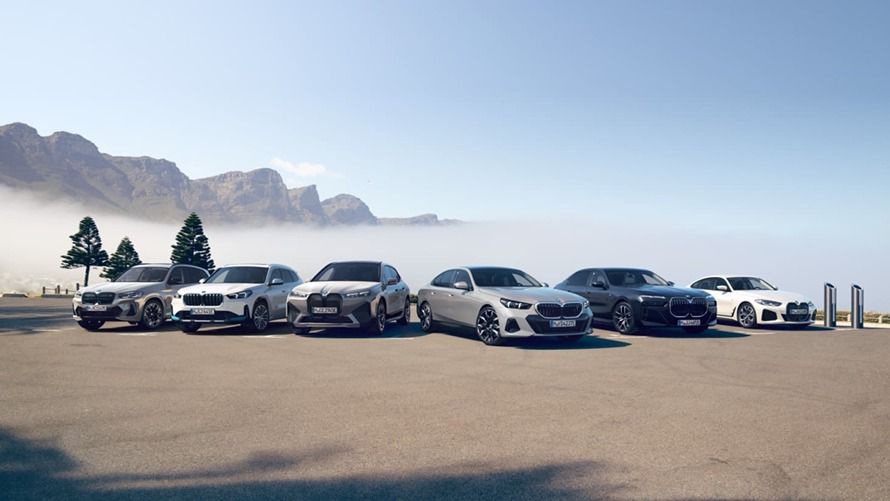Our tool for managing your permission to our use of cookies is temporarily offline. Therefore some functionality is missing.
OVERVIEW OF THE BMW M SERIES.
This combination of technical perfection with highly emotional sports performance will raise your heart rate. BMW M models are real sports cars. From saloons and coupés to SAVs, racing technology such as M sports suspension, engines, and typical M tuning make these sporty vehicles the ultimate blend of luxury and performance.
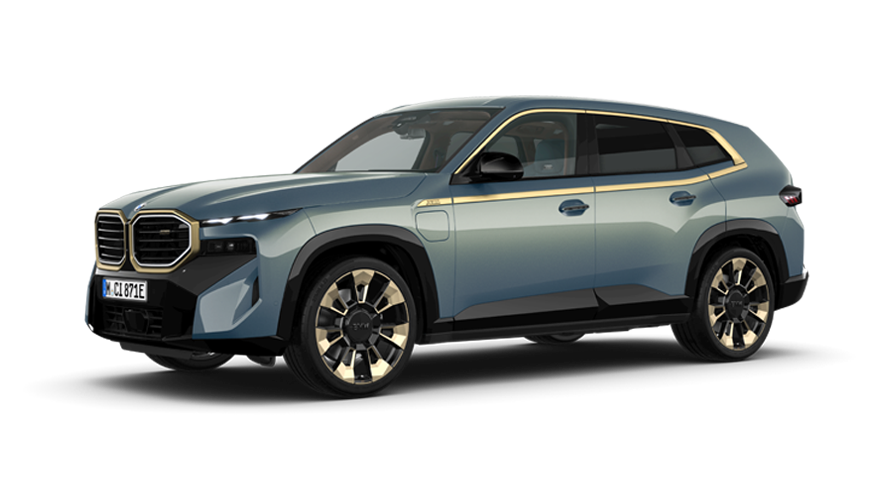
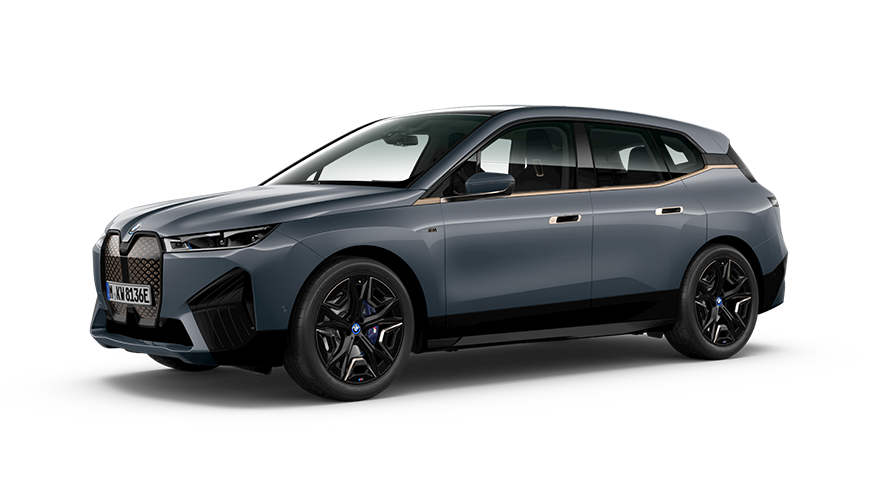

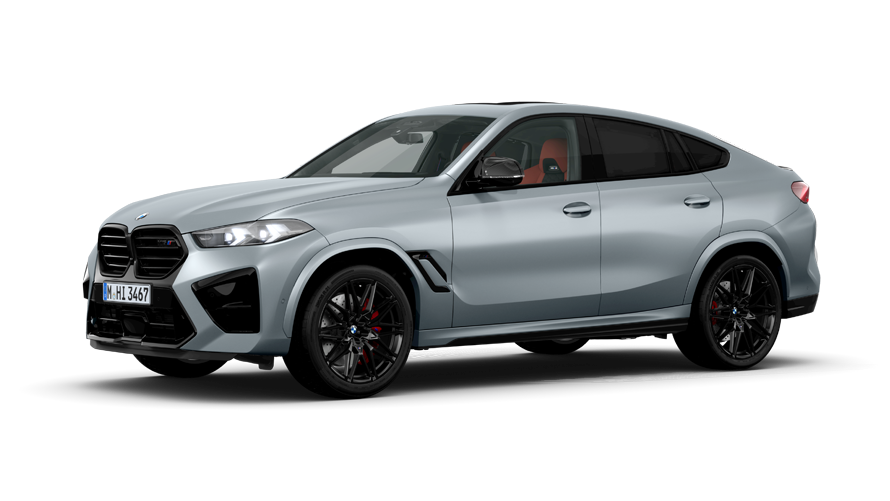

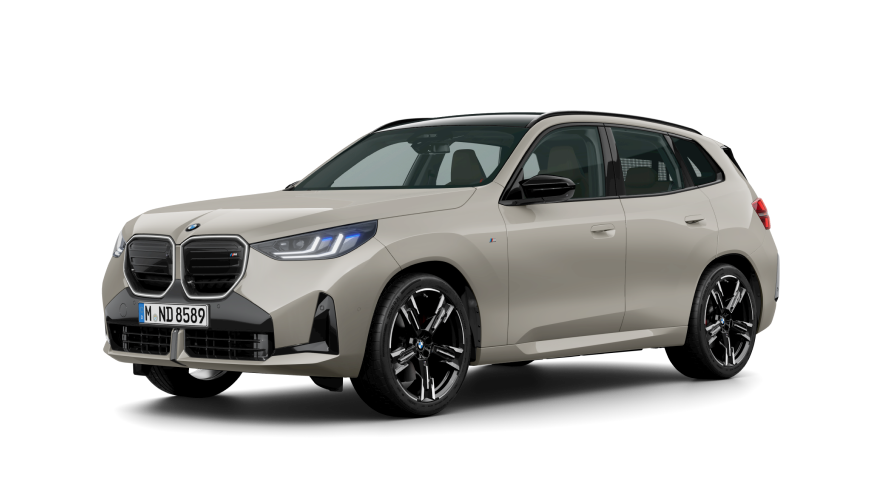

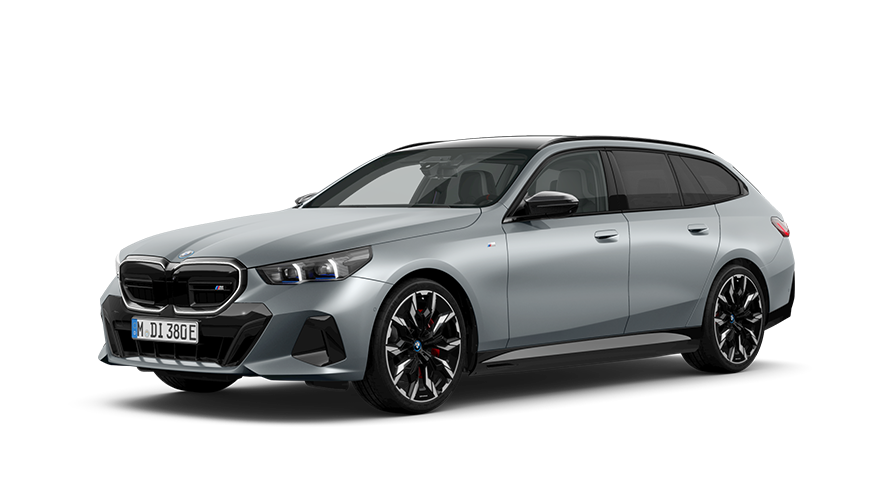

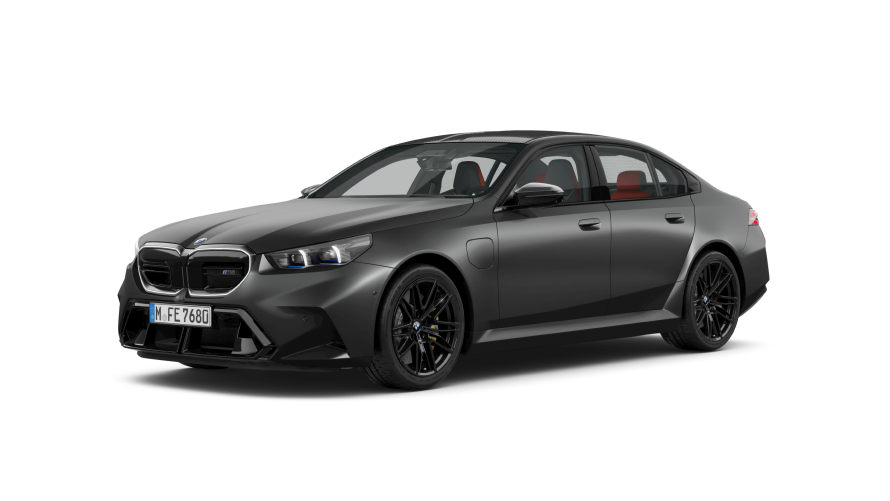
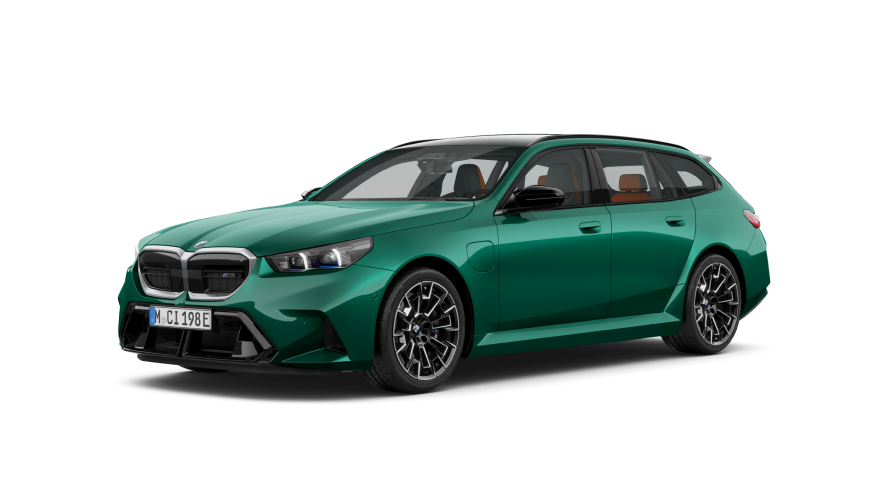


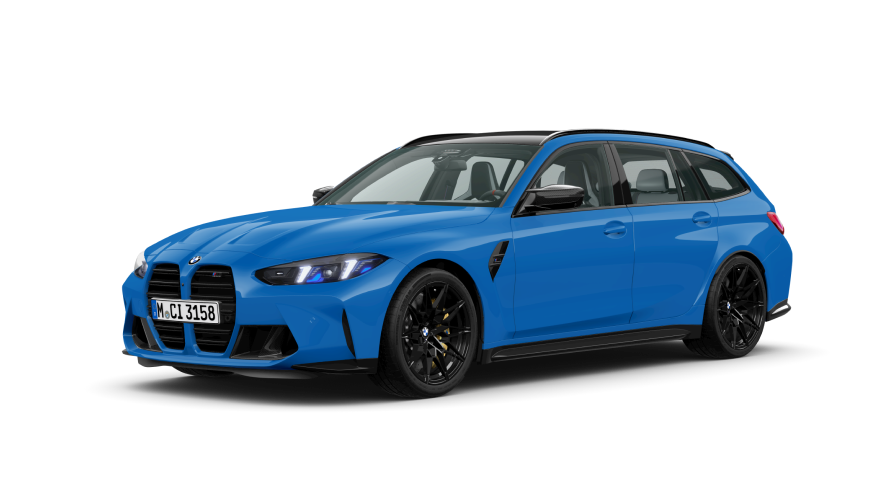
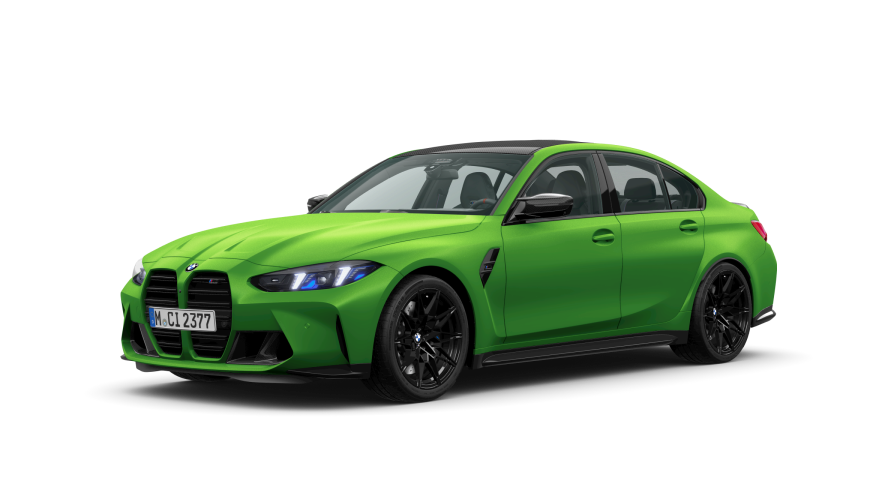


BMW XM
BMW iX M60
BMW X7 M60i
BMW X6 M Automobiles
BMW X5 M
BMW X3 M
BMW X2 M35i xDrive
BMW i5 M60 xDrive Touring
BMW i5 M60
BMW M5 Sedan
BMW M5 Touring
BMW i4 M50
BMW 4 Series Coupé M Models
BMW M3 Sedan
BMW M2 Coupé
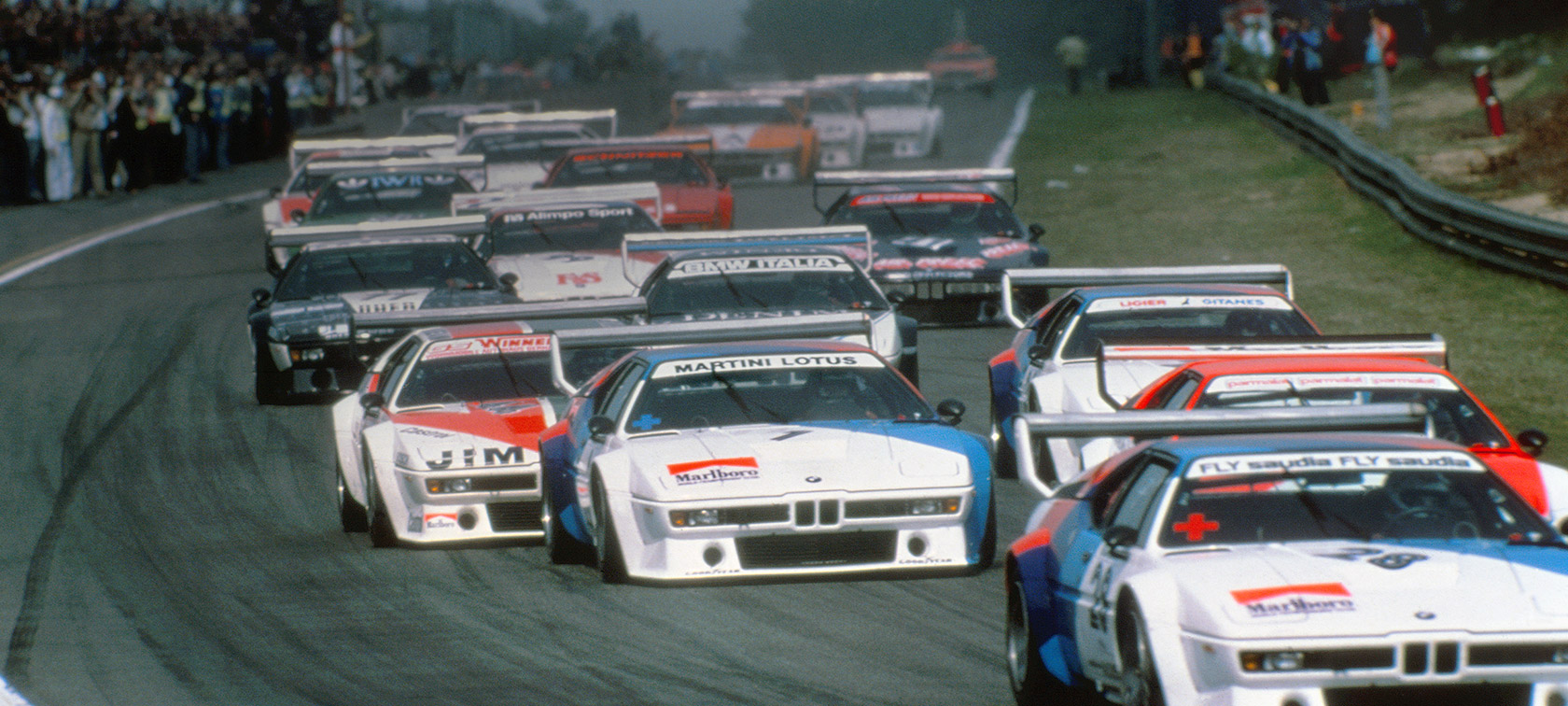
OVERVIEW OF THE BMW M SERIES’ HISTORY.
Passion for motor sport, exclusivity, and perfection – join us as we journey through almost 50 years of BMW M automobiles! We’ll introduce you to vehicles from the legendary BMW M1 and M3 to the current BMW M8. Discover exceptional performance and the opportunity to personalize models with BMW Individual and BMW M performance parts.
OVERVIEW OF THE BMW M SERIES’ HISTORY.
Passion for motor sport, exclusivity, and perfection – join us as we journey through almost 50 years of BMW M automobiles! We’ll introduce you to vehicles from the legendary BMW M1 and M3 to the current BMW M8. Discover exceptional performance and the opportunity to personalize models with BMW Individual and BMW M performance parts.
THE BMW M1 (E26).
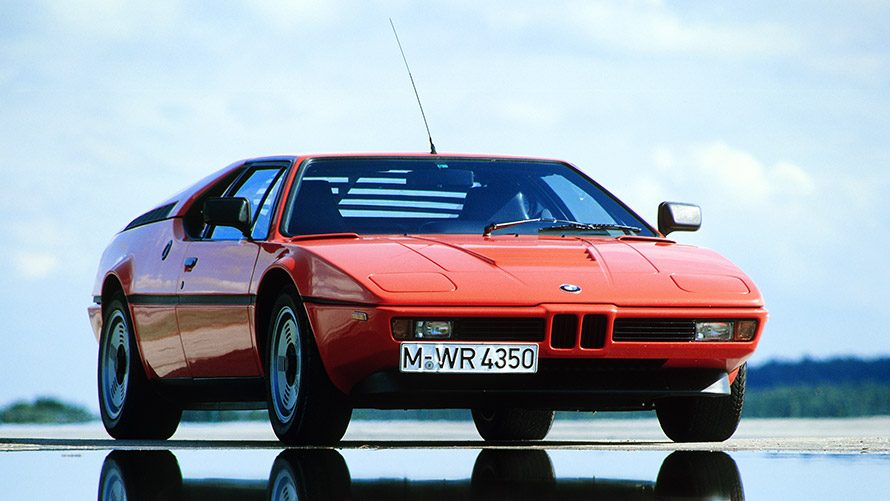
With its timeless wedge shape, the first vehicle developed by the then BMW Motorsport GmbH in the late seventies gets an enthusiastic welcome. Developed by design legend Giorgio Giugiaro, the shape is based on the BMW Turbo, a 1972 study by BMW’s longtime designer Paul Bracq. The narrow kidneys, the folding headlights and the clearly-drawn lines combine esthetics and dynamics. And the performance is also legendary: Until 1983 it is the fastest production vehicle in Germany. The mid-engine super sports car reaches a maximum speed of well over 260 km/h, establishing the tradition of M road vehicles.
From 1979 to 1981 only 460 vehicles are made – all hand built. Anyone lucky enough to drive an BMW M1 talks of its exceptional driving style, flexible curve dynamics and fast-turning 3.5 liter engine.
Production period: 1978 – 1981
Engines: 3.5 liters (204 kW, 277 hp)[1], 6-cylinder
Length/width/height: 4,359 mm / 1,824 mm / 1,138 mm
BMW 1 M COUPÉ (E82).
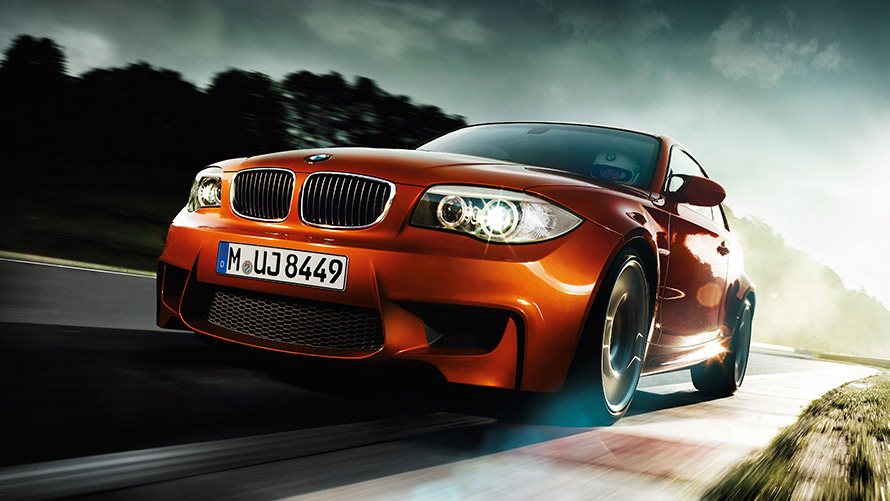
Even though the BMW 1 has been delighting drivers who appreciate sportiness and outstanding handling in a compact vehicle since 2004, the BMW 1 M Coupé has only been available since 2011. A twin turbocharger boosts the inline 6-cylinder petrol engine to 250 kW (340 hp). Combined with the short wheelbase and the wider track than the regular BMW 1, this provides a driving experience with extraordinary dynamics. More than 6,300 vehicles were built up to 2012. Three years later the BMW M2 joins the series, continuing the concept of merging a compact vehicle with the best characteristics of a sports car.
Production period: 2011 – 2012
Engines: 3.0 liters (250 kW, 277 hp)[1], 6-cylinder
Length/width/height: 4,380 mm / 1,803 mm / 1,420 mm
THE BMW M2 (F87, G87).
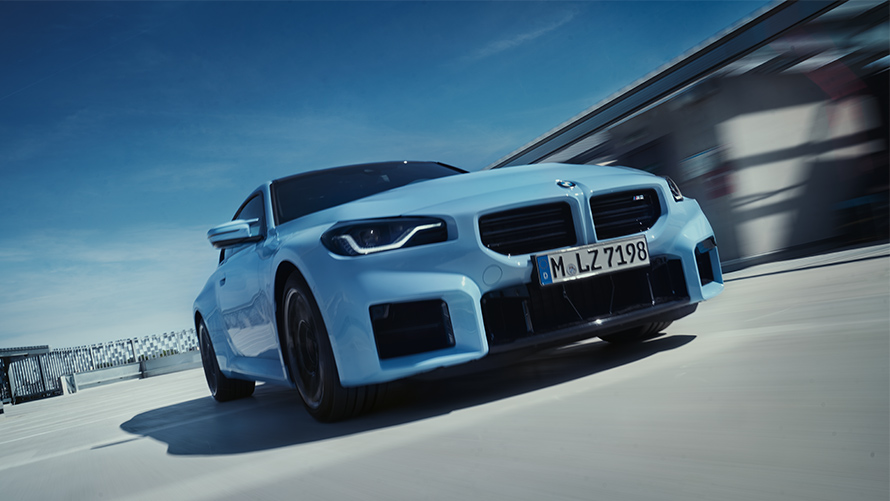
Since 2015 the BMW M2 has been the successor to the BMW 1 M Coupé, and has continued the dynamic, powerful compact series established by the BMW 2002 Turbo and the BMW M3 (E30).
The vehicle’s distinctive, confident exterior with its wide-flared wings and large inlets in the front apron are a testament to this. The 6-cylinder, turbo petrol engine has impressive torque and power, transferred to the road via an optional double-clutch transmission. The BMW M2 Competition, with an additional output of 30 kW (40 hp), took over in 2018 and is surpassed only by the BMW M2 CS (Club Sport). This has a production run of just 2,200 vehicles and an engine producing 331 kW (450 hp). In every version, the M chassis ensures clean, clear handling, precise control, and driving pleasure.
The second generation of the BMW M2 will appear in 2022, the 50th anniversary year of BMW M GmbH - and with its unmistakable M character it shows itself to be a homage to pure motorsport feeling. With a new expressive exterior in classic box design, compact proportions and an assertive stance, it promises pure driving pleasure with maximum handling control. Perfectly tuned chassis components from BMW M and a powerful BMW M TwinPower Turbo 6-cylinder petrol engine enable acceleration from 0-100 km/h from 4.1 seconds and a top speed of 250 km/h thanks to impressive power figures of 338 kW (460 hp).
Production period BMW M2: 2015 – today, M2 Competition: 2018 – 2020, M2 CS: 2020
Engines: 3.0 liters (338 kW, 460 hp)[1], 6-cylinder
Length/width/height: 4,580 mm / 1,887 mm / 1,403 mm
THE BMW M3 (E30/2S, E30/2SC, E36/2S, E36/2CS, E36/4S, E46/2S, E46/2CS, E90/92/93, F80, G80, G81).

Originally, the BMW M3 (E30/2S, E30/2SC) is intended to be the road version of a racing saloon. However, interest is so overwhelming that many more than the 5,000 vehicles needed for Group A approval are sold. Extreme dynamics are immediately evident on the exterior; from the wide fenders and iconic rear wings to the newly designed C-pillar. The interior also features everything that has proven its worth in racing: internally ventilated brake discs, sports transmission with lower left first gear, the 2.3 liter 4-cylinder petrol engine with 143 kW (200 hp).
While the racing version goes from win to win, the BMW M3 exceeds all sales expectations: More than 18,000 vehicles, including the convertible version, are sold. As well as the revised 154 kW (220 hp) Evolution version and the BMW M3 Sport Evolution with 2.5 liter displacement and 166 kW (238 hp).
1992 sees the second generation of the BMW M3 (E36) continuing the success story. The vehicle is clearly more grown-up. There are only minor visual changes compared to the regular model, such the aerodynamically optimized M exterior mirrors. But there are radical changes under the hood: The inline 6-cylinder petrol engine with 210 kW (286 hp) and variable overhead camshafts (VANOS system) delivers breathtaking acceleration. From 1995 the model is updated to give not just 200 cm3 more displacement, but also 236 kW (321 hp).
At the turn of the millennium, the third version of the BMW M3 (E46) is launched, followed by the BMW M3 Convertible one year later. They continue the fundamental concept behind the BMW M3, combining as little weight as possible with as much power as possible. The M genes are evident in the 252 kW (343 hp) driving experience. The exteriors of the Coupé and Convertible differ from the standard model with their wider camber, the grilles on the front fenders and the powerdome on the hood.
The BMW M3s built between 2007 and 2013 are now fitted with a number of new features. Just like the regular models, three bodies are available: Sedan (E90), Coupé (E92), and Convertible (E93). For the first time, a BMW M3 has a V8 engine. The 4-liter engine delivers 309 kW (420 hp) and revs up to 8,300 rpm – the highest-revving production engine ever built by BMW! With the optional M Driver’s Package, the car reaches a maximum speed of 280 km/h.
From 2014, the fifth generation of the BMW M3 (F80) once again relies on an inline 6-cylinder petrol engine which, for the first time in an BMW M3, is fitted with turbochargers. The engine delivers its maximum torque at 1,850 rpm, making fast acceleration possible, whatever the circumstances. The 317 kW (432 hp) BMW M3 Sedan is the only body design available – the related Coupé and Convertible are now called BMW M4. The fender extensions, the M exterior mirrors, and the dark M carbon roof also show to the outside world that this vehicle has exceptional handling and driving dynamics. 2016 sees the introduction of the BMW M3 Competition, featuring an engine that delivers 331 kW (450 hp) and uses the adaptive M chassis as standard.
In 2018, the BMW M3 CS is manufactured for just three months, with an engine adding an additional 7 kW (10 hp) to bring it to 338 kW (460 hp).
The BMW M3 (G80) has been available since 2021 with a radically different appearance from the standard sedan due to its large, high-standing kidney. It continues the concept of combining sportiness, dynamism, and everyday practicality of the previous BMW M3 – the Sports Sedan is equipped with a manual 6-speed transmission and 353 kW (480 hp) engine. The BMW M3 Competition is also available, offering 375 kW (510 hp). The Drivelogic 8-speed M Steptronic transmission enables rapid gear changes for maximum driving dynamics, combined with the precisely-tuned M chassis.
The BMW M3 Competition M xDrive Touring (G81) is launched in 2022. The first M3 with a touring body and M xDrive, it combines the outstanding performance of a BMW M3 with the flexibility of a touring car.
The latest addition to the M3 series once again delivers the characteristics of a sports car blended with an individualistic and expressive spirit.
Powered by a high-performance M TwinPower Turbo inline 6-cylinder petrol engine that produces 375 kW (510 hp) and a Drivelogic 8-speed M Steptronic transmission, the BMW M3 Competition M xDrive Touring is all about exceptional handling and quick gear changes. The exterior with its broad stance and wider track makes a powerful impression that is highlighted by the large kidney.
Production period BMW M3: 1986 – today
Engines: 2.3 – 4.0 liters (143 – 375 kW, 200 – 510 hp)[1], 4-, 6- & 8-cylinder
Length/width/height: 4,346 – 4,794 mm / 1,680 – 1,903 mm / 1,370 – 1,436 mm
THE BMW M4 (F82, F83, G82, G83).
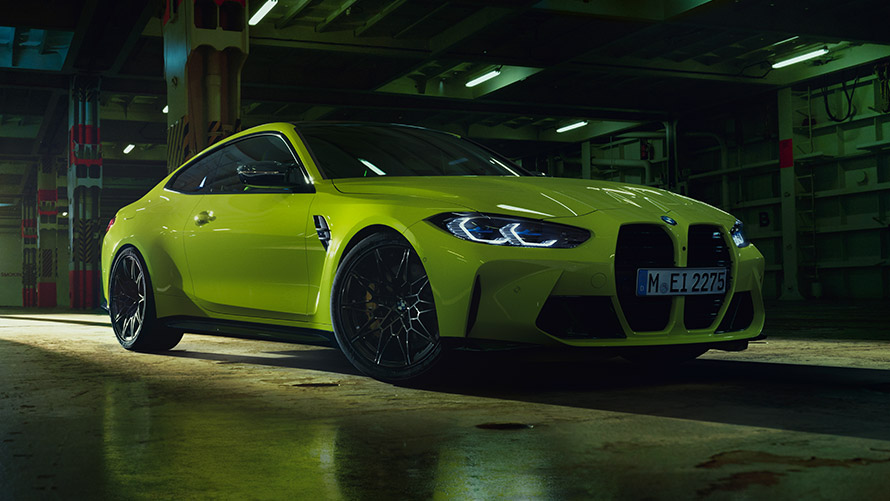
The BMW 4 series replaces the 3 Series Coupé and represents a clear break. Obviously designed from scratch, this vehicle differs significantly from the BMW 3 series with its recessed passenger compartment, longer hood and shorter overhangs – all leading to a more expressive, more powerful appearance. This also applies to the BMW M4 Coupé and the M4 Coupé Competition (2016 – 2020) delivering 331 kW (450 hp), as well as the 2017 and 2018 M4 Coupé CS with 338 kW (460 hp) Meanwhile, the M4 is available as GTS Coupé (2017 – 2018), powered by 368 kW (500 hp). The M4 Convertible and the M4 Convertible Competition bring a breath of fresh air. All vehicles use a 3.0 liter 6-cylinder petrol engine with a twin scroll turbocharger.
The considerably longer and wider second generation sets clear visual accents with the double kidney standing high and tilted forward. In the BMW M4 with manual transmission the 3 litre 6-cylinder M TwinPower Turbo engine delivers 353 kW (480 hp). The BMW M4 Competition features a BMW 8-speed M Steptronic with Drivelogic and 375 kW (510 hp). With the optional M Driver’s Package, it reaches a speed of 290 km/h. Dynamism and liveliness are underscored by precise, uncompromising design.
Production period BMW M4: 2014 – today
Engines: 3.0 liters (317 – 375 kW, 431 – 510 hp)[1], 6-cylinder
Length/width/height: 4,671 – 4,794 mm / 1,870 – 1,887 mm / 1,383 – 1,395 mm
THE BMW M5 (E28S, E34S, E34/5S, E39S, E60, E61, F10, F90).
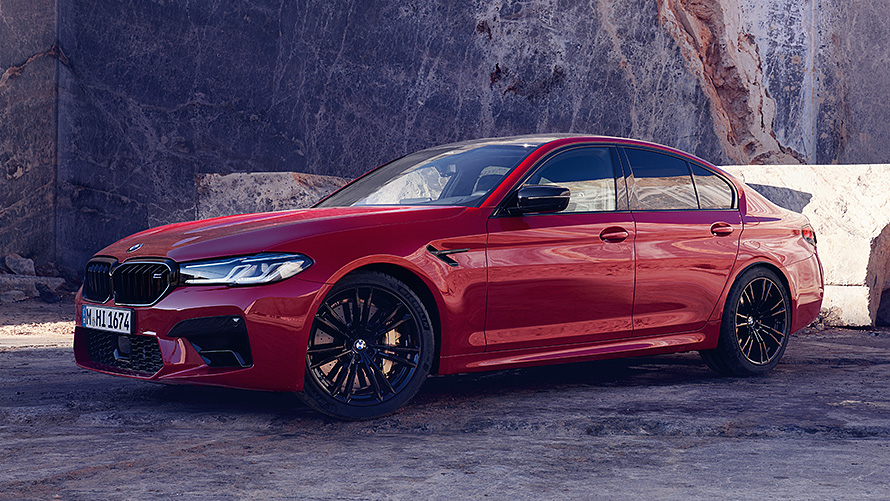
Visually, the first BMW M5 (E28S) in 1985 hardly differed from the standard sedan. But the hand-crafted vehicles feature an updated BMW M1 engine and can therefore reach a speed of over 250 km/h. With more than 2,200 vehicles produced, the foundations for the top-of-the-line version of one of the most successful sports sedans were laid.
In 1988, the new BMW 5 series also includes a new M5 (E34S). This initially delivers 232 kW (315 hp), but in 1992 the engines are re-engineered. Now they extract 250 kW (340 hp) from a 3.8 liter displacement and, in a limited edition of fewer than 900 units, the car is also available as an M5 Touring. Thanks to its flawless driving experience and high-precision steering, this M5 also copes with every situation confidently and competently.
From 1998 to 2003, the BMW M5 (E39S) conquers the highway with an 8-cylinder engine delivering a 5 liter displacement and 294 kW (400 hp). At this time, it is the perfect example of a sports sedan – ideal for everyday use yet, thanks to its performance and dynamism, a match for almost every sports car.
The successor model (E60) appears in showrooms in 2005, followed by the Touring version (E61) in 2007, which is also the last M5 in this body shape. Equipped with a 10-cylinder engine, its 373 kW (507 hp) accelerates the vehicle to 305 km/h with the optional M Driver’s Package.
In 2011, BMW M GmbH equips the M5 (F10) with a twin turbo engine for the first time. The engine delivers 412 kW (560 hp) and, at the time, is the most powerful model in the BMW line-up. Two years later, the first M5 Competition model is available with a slight increase in performance to 423 kW (575 hp), and in 2014 the 8-cylinder “30 years of M5” Special Edition is re-engineered to produce 441 kW (600 hp). Placing maximum torque between 1,500 and 5,750 revolutions per minute is unusual – so acceleration capacity is there, whatever the circumstances.
The current BMW M5 (F90) has remained true to the product line since 2017 and combines the typical M sportiness with the comfort and elegance of the BMW 5 Sedan. The recognizable engine from the previous M5, the new M xDrive all-wheel drive, and an 8-speed M Steptronic transmission mean powerful acceleration and outstanding driving dynamics are typical features of this vehicle from BMW M GmbH. This is only surpassed in 2018 by the BMW M5 Competition, which delivers 18 kW (25 hp) more, taking 460 kW (625 hp) to the streets. Limited to just one year of production, the BMW M5 CS (Competition Sport) accelerates from 0 to 100 km/h in 3.0 seconds with 467 kW (635 hp). Carbon parts reduce the weight of the extremely sporty sedan, which, on request, can be electronically controlled from 305 km/h.
Production period BMW M5: 1985 – 1995, 1998 – 2003, 2005 – today
Engines: 3.5 – 5.0 liters (210 – 460 kW, 286 – 625 hp)[1], 6-, 8- and 10-cylinder
Length/width/height: 4,620 – 4,983 mm / 1,700 – 1,903 mm / 1,400 – 1,473 mm
THE BMW M6 (E63, E64, F06, F12, F13).
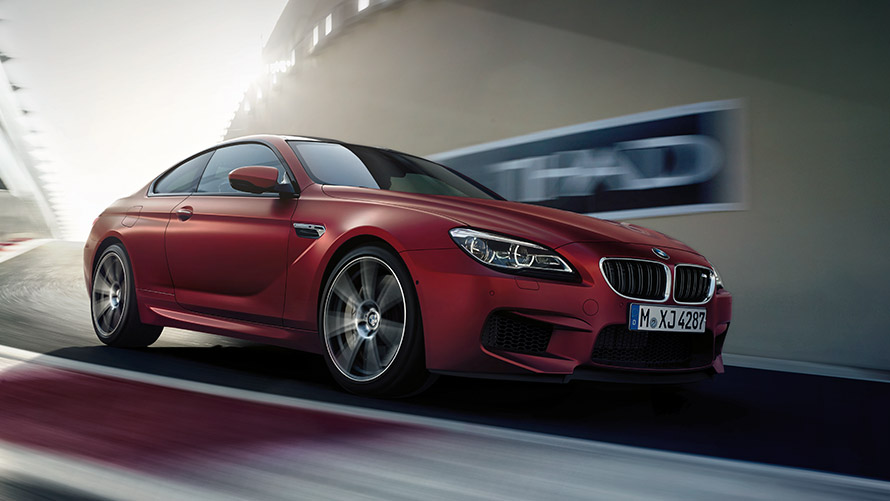
The M6’s predecessor, the BMW M635CSi, is already rolling off the production line in 1984. Equipped with the re-engineered BMW M1 engine, its 210 kW (286 hp) makes the coupé designed by Paul Bracq one of the fastest sports cars available at the time.
In 2005, with the end of the BMW 8 (E31), BMW once again launches a luxury-class coupé onto the market. Designed under Chris Bangle’s leadership, the vehicle has the typical M Coupé features: an exceptionally powerful 10-cylinder engine with 373 kW (507 hp), a characterful and confident design, and an adaptive chassis that not only guarantees comfort but also precision and driving dynamics. This is true for both fixed-roof and convertible versions of the car.
Its successor is introduced in 2012. The engine now has two fewer cylinders, but significantly more power. The twin-turbo V8 petrol engine delivers 412 kW (560 hp) or, as with the M6 Competition, 423 kW (575 hp). The Competition Coupé’s engine is re-engineered mid-2015 and puts 441 kW (600 hp) on the highway, thanks to its 7-speed dual-clutch transmission. With the optional M Driver’s Package, the BMW M6 reaches a speed of 305 km/h. This performance is reflected in the Coupé, the Convertible and, since 2013, the Gran Coupé.
Production period BMW M6: 2005 – 2018
Engines: 4.4 – 5.0 liters (373 – 441 kW, 507 – 600 hp)[1], 8- & 10-cylinder
Length/width/height: 4,871 – 4,898 mm / 1,855 – 1,899 mm / 1,372 – 1,377 mm
THE BMW M8 COMPETITION (F91, F92, F93).
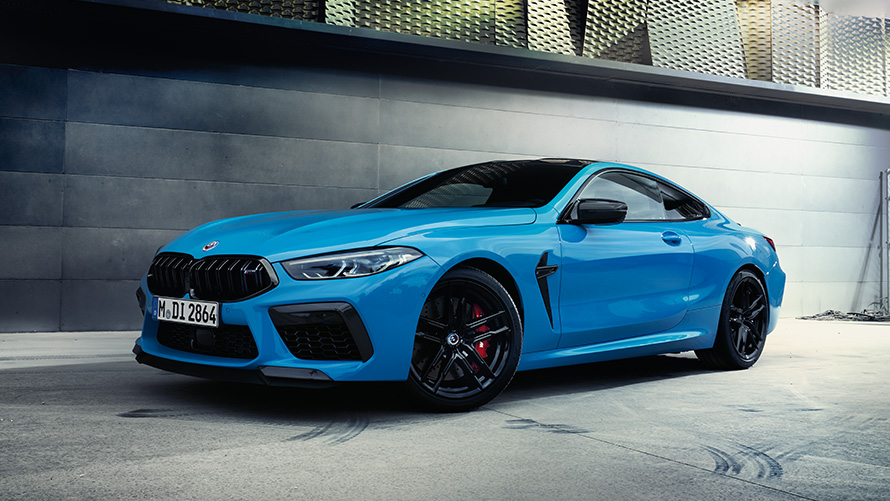
The M8 Coupé could have been around for almost 30 years. At the beginning of the 1990s BMW engineers developed a BMW M8 prototype with a V12-cylinder engine based on the E31 Coupé.
But it took until 2019 for the first fully-badged BMW M8 Competition Coupé (F92), Convertible (F91) and Gran Coupé (F93) to appear in showrooms. With two parallel turbochargers, the 8-cylinder boasts a power output of 460 kW (625 hp) which, with the optional M Driver’s Package, enables speeds well above 300 km/h.
Even when parked, it is obvious the BMW M8 is the perfect combination of sportiness and luxury. The radical lines are dynamic and yet extremely elegant. Details such as the black chrome radiator grille and the high-gloss black mirror caps highlight the car’s sporty character: This is underscored by the optional carbon roof. What’s more, the adaptive M chassis, which adjusts to current driving conditions and supports the BMW M xDrive, ensures unparalleled driving dynamics. Whether as a Coupé, a Convertible or a four-door Gran Coupé, these vehicles offers superlatives in every respect.
Production period BMW M8 Competition: 2019 – today
Engines: 4.4 liters (460 kW, 625 hp)[1], 8-cylinder
Length/width/height: 4,867 – 5,098 mm / 1,907 – 1,943 mm / 1,353 – 1,420 mm
THE BMW X4 M (F98).
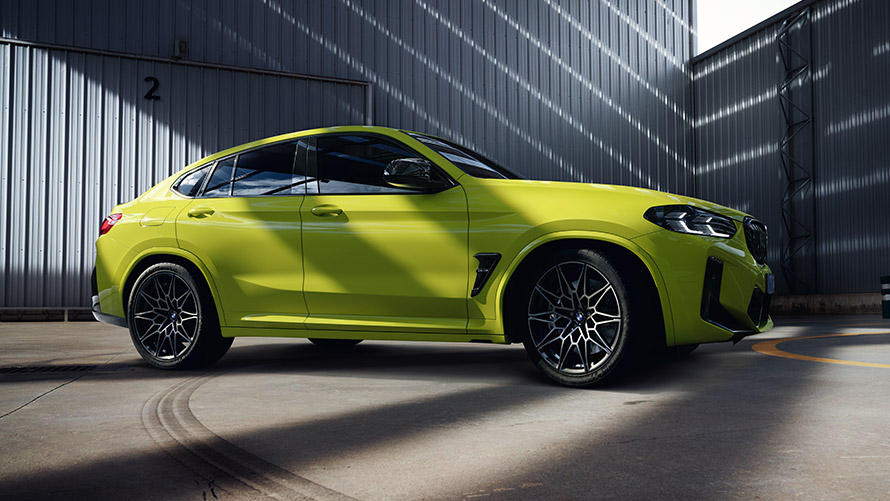
The M model is launched with the second generation of the BMW X4 in 2019. The sporty elegance of the basic model is even more clearly and precisely presented: The exclusive design elements, from the air intakes in the bumper to the mirror caps, emphasize the athletic character of the SAV/Coupé crossover. The vehicle shares the technical specifications and engines with the BMW X3 M: The BMW X4 M boasts 353 kW (480 hp), and the X4 M Competition 375 kW (510 hp) and has, after the model redesign, an enormous torque of 650 Nm. Thanks to the optional M Driver’s Package, the vehicles achieve maximum speeds of 280 and 285 km/h, respectively. The BMW X4 M combines outstanding performance and exclusivity with an expressive temperament.
Production period BMW X4 M: 2019 – today
Engines: 3.0 liters (353 – 375 kW, 480 – 510 hp)[1], 6-cylinder
Length/width/height: 4,754 mm / 1,927 mm / 1,620 mm
THE BMW X5 M (E70, F85, F95).

The second generation of BMW's first sporty SUV is redesigned in 2009 by BMW M GmbH, thereby creating the first BMW X5 M (E70). Powered by two turbochargers, the 4.4 liter V8-cylinder petrol engine, one of the most frequently used M engines, produces 408 kW (555 hp). Together with the X6 M, this is the first time that a BMW M has the all-wheel xDrive – as an M version, of course. The vehicle has a low-key appearance and the classic M driving dynamics.
This is carried on by the successor model (F85) and the 4.4 liter twin-turbo engine, which brings 423 kW (575 hp) on to the highway thanks to the new 8-speed M transmission. Here, the improved aerodynamics of the third-generation BMW X5 does the rest, enhanced by typical M elements such as the air intakes.
The next generation of the BMW X5 M (F95) masterfully combines M and X genes in performance and driving dynamics with luxurious interiors and comfort. The twin turbo-charged 8-cylinder petrol engine delivers 441 kW (600 hp) with the BMW X5 M and 460kW (625 hp) with the BMW X5 M Competition. With the optional M Driver’s Package, the SUV reaches a maximum speed of 290 km/h.
Production period BMW X5 M: 2009 – 2013, 2015 – today
Engines: 4.4 liters (408 – 460 kW, 555 – 625 hp)[1], 8-cylinder
Length/width/height: 4,854 – 4,948 mm / 1,933 – 2,015 mm / 1,739 – 1,762 mm
THE BMW X6 M (E71, F86, F96).
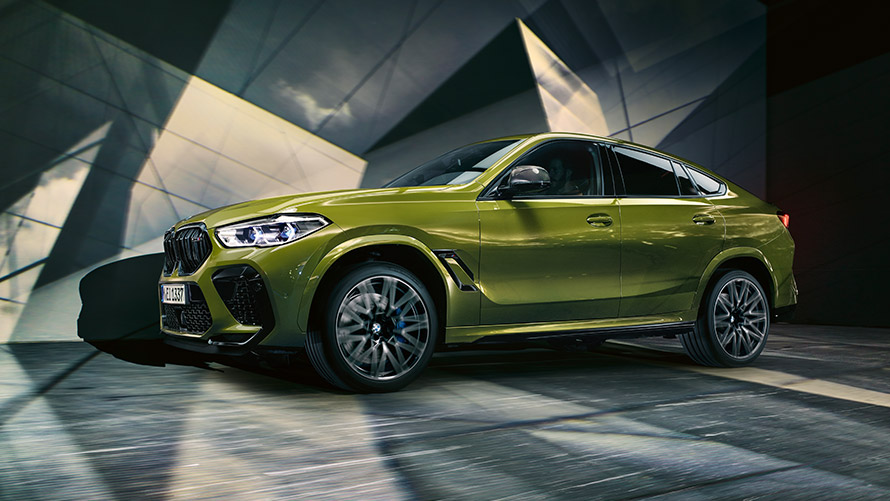
In 2008, the BMW X6 (E71) attracts attention as BMW’s first Coupé/SUV crossover. A year later, the M model BMW X6 M appeals to people who want the best of both worlds: SUV and sports car; unrestrained dominance and extraordinary driving dynamics. The combination of M xDrive and the 4.4 liter M TwinTurbo 8-cylinder petrol engine (555 hp/408 kW) provides the SUV with unprecedented agility – whatever the terrain.
In 2015 the second generation X6 M (F86) is ready to go, with the familiar 4.4 liter twin-turbo engine from the M5 and X5 M, boasting 423 kW (575 hp). With the optional M Driver's Package, the vehicle combines a coupé-like profile with large air intakes and achieves 280 km/h.
2019 sees a switch in model to the X6 M Competition (F96). This brings its formidable 460 kW (625 hp) power from the M xDrive with active M differential to the highway and combines the advantages of rear and all-wheel drives. Exclusive M highlights, such as the black front grid or the M gills with integrated M logo, emphasize the distinctive look even further. The BMW X6 M combines luxury with supremacy and extreme sportiness – an extraordinary combination!
Production period BMW X6 M: 2009 – today
Engines: 4.4 liters (408 – 460 kW, 555 – 625 hp)[1], 8-cylinder
Length/width/height: 4,876 – 4,948 mm / 1,983 – 2,019 mm / 1,684 – 1,695 mm
THE FIRST GENERATION.
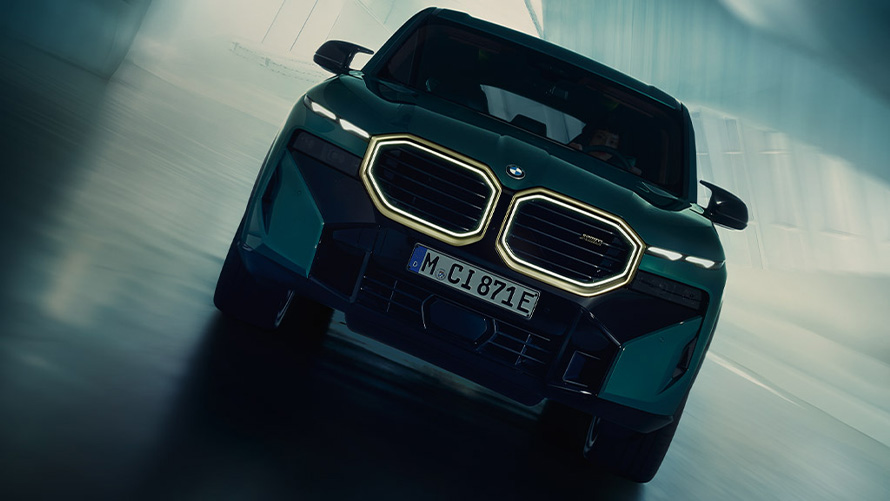
(BMW G09)
Equipped with modern plug-in hybrid technology, the BMW XM brings a sporty 480 kW (653 hp) onto the road thanks to its newly developed V8 engine and with its 83 km of purely electric range[2] permits almost silent and emission-free driving.
Optically, too, the large and powerful proportions demonstrate its uncompromising individuality. With the new, unmistakable front design, the BMW M brand is further establishing itself within the luxury segment.
The winning combination of bringing BMW M and BMW X elements together with the uncompromising standard of luxury to produce something entirely new also continues systematically within the interior of the BMW XM. The front section displays a performance-orientation. And in typical BMW M style, the focus is clearly on the driver. The new screen grouping of the BMW Curved Display creates a bridge between traditional driver orientation and modern digital character.
The extremely driver-centred front section contrasts with a cosy and luxurious lounge atmosphere in the rear. This is where passengers encounter a haven with celebrity character and materials of supreme quality, inspired surfaces and expressive details. The roof with its three-dimensional prism structure presents an optical highlight in the rear. Together with the ambient light, this element impressively conveys the interplay of progressive luxury and comfort.
Production period: from late 2022
Engines: 4.4-litre (230–430 kW, 313–585 hp)[1][3], 6&8-cylinder combustion engine + electric motor (145 kW, 197 hp)[3][4[5], system output 350–550kW (475–748 hp) [1][3][4][5][6]
Fuel consumption and CO2 emissions.
BMW M2 Coupé:
Fuel consumption in l/100 km (combined)[1][7]: 10.2–9.6
CO2 emissions in g/km (combined)[1][7]: 231–218BMW M3:
Fuel consumption in l/100 km (combined)[1][7]: 10.1–10.0
CO2 emissions in g/km (combined)[1][7]: 231–227BMW M4:
Fuel consumption in l/100 km (combined): 10.2–9.6
CO2 emissions in g/km (combined): 232–221BMW M5:
Fuel consumption in l/100 km (combined)[1][7]: –[3]
CO2 emissions in g/km (combined): –[3]BMW X1 M35i:
Fuel consumption in l/100 km (combined)[1][7]: 8.2–7.7
CO2 emissions in g/km (combined)[1][7]: 186–174BMW X3 M:
Fuel consumption in l/100 km (combined)[1][7]: 11.0–10.6
CO2 emissions in g/km (combined)[1][7]: 250–241BMW X4 M:
Fuel consumption in l/100 km (combined)[1][7]: 10.8–10.5
CO2 emissions in g/km (combined)[1][7]: 247–238BMW X5 M:
Fuel consumption in l/100 km (combined)[1][7]: 13.1–12.9
CO2 emissions in g/km (combined)[1][7]: 295–291BMW X6 M:
Fuel consumption in l/100 km (combined)[1][7]: 12.9–12.7
CO2 emissions in g/km (combined)[1][7]: 292–288BMW XM:
Fuel consumption in l/100 km (combined)[1][7][8]: –[3]
CO2 emissions in g/km (combined)[1][7][8]: 45–31
Energy consumption in kWh/100 km (combined)[1][7][8]: 34.0–32.5
Electric range in km[1][7][8]: 76–84The values of fuel consumptions, CO2 emissions and energy consumptions shown were determined according to the European Regulation (EC) 715/2007 in the version applicable at the time of type approval. The figures refer to a vehicle with basic configuration in Germany and the range shown considers optional equipment and the different size of wheels and tires available on the selected model.
The CO2 efficiency specifications are determined according to Directive 1999/94/EC and the European Regulation in its current version applicable. The values shown are based on the fuel consumption, CO2 values and energy consumptions according to the NEDC cycle for the classification.
When charging times are shown they can be affected by a number of factors such as type of charger, voltage supplied to the charger/car and type of current (AC or DC) supplied to the charger/car. The car also plays a role in charging times as it can be set by the driver to accept various different amperage and should preconditioning be used to heat or cool the vehicle while charging this will also affect the charging time.
The basis for the calculation of the charging times for 100 km range is the electric consumption of the vehicle based on the use of a high-Powered Charging station (HPC) or charging type and current as indicted in the literature above. The testing procedure measures are based on a 23 degrees Celsius battery start and ambient temperature with certification values excluding additional auxiliary consuming devices and systems within the vehicle such as seat heating, displays, air conditioning.
Individual consumption (fuel economy) may differ due to driving profile, vehicle load profile, auxiliary consumer usage, temperature, and ambient conditions. Consumption is based on WLTP or NEDC (whichever is indicated) best case conditions and is independently tested for BMW Group. If you are comparing this range with other models or brands make sure they are stating the same WLTP or NEDC testing regime. These results can be used to compare vehicles on a close to “like for like” basis but are unlikely to be achieved in real world conditions for reasons including temperature variation, driving conditions and the use of the auxiliary systems referred to above.
Information provided and images displayed on this site include overseas models and may show some features not available in New Zealand. Please contact an authorised BMW dealer for specific information on vehicles and features available in New Zealand. Product changes may have been made since production of this content.
Note: To obtain NZ CO2 figures for vehicles imported by BMW Group NZ in relation to the NZ Clean Car discount or “FeeBate” you will need to contact your preferred dealer. The Clean Car discount figures sourced from your dealer will differ from those listed in the BMW owner’s handbook and reported figures as they have been converted by the NZ government to WLTP3 from figures derived through one of the following testing procedures: WLTP4 or NEDC or Japanese JC08 mode or Japanese 10-15 mode or CAFE test cycle.
For all vehicles not imported by BMW NZ (Used vehicle imports) you will need to contact the source market for these CO2 figures as BMW Group NZ has no access to and cannot source this CO2 data.
For more information on the New Zealand Clean Car Programme, please visit https://www.nzta.govt.nz/vehicles/clean-car-programme/
[1] Performance data of petrol engines apply to vehicles using RON 98 fuel. Fuel consumption data apply to vehicles using reference fuels in accordance with EU Regulation 715/2007. Unleaded RON 91 and higher with a maximum ethanol content of 10% (E10) may also be used. BMW recommends RON 95 fuel. For high-performance automobiles, BMW recommends RON 98 fuel.[2] Range depends on various factors, in particular: individual driving style, route characteristics, outside temperature, heating/air conditioning, pre-conditioning.
[3] Provisional figures; any missing figures were unavailable at the time of publication.
[4] For plug-in hybrid: Electric drive depending on battery charging level.
[5] For plug-in hybrid: At temperatures below freezing, the fully electric drive system is only available after a few kilometres of driving, once the battery has heated to operational temperature..
[6] Composed of combustion engine drive (specified nominal value) and electric drive (up to specified nominal value). Electric drive depending on battery charging level.
[7] Official data for fuel consumption, CO2 emissions, power consumption and electric range was determined in accordance with the prescribed measuring procedure and corresponds to European Regulation (EC) 715/2007 in the applicable version. For ranges, data determined as per WLTP takes into account any optional equipment (available on the German market in this case). For vehicles that have been newly type approved since 1 January 2021, only the official data according to WLTP exists. In addition, NEDC values are deleted from the certificates of conformity as of 1 January 2023 by EC regulation 2022/195. For more information about NEDC and WLTP measuring procedures visit www.bmw.com/wltp
Further information about fuel consumption and official model-specific CO2 emissions of new passenger cars can be found in the "Guideline for fuel consumption, CO2 emissions and electric power consumption for new passenger cars", available free of charge at all points of sale, at the Deutsche Automobil Treuhand GmbH (DAT), Hellmuth-Hirth-Str. 1, 73760 Ostfildern-Scharnhausen, Germany, and under https://www.dat.de/co2/.
[8] For plug-in hybrid: Weighted, combined (EC AC Charge Weighted)
